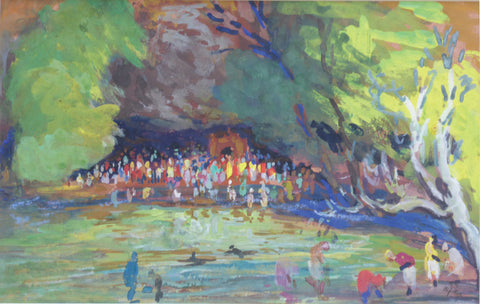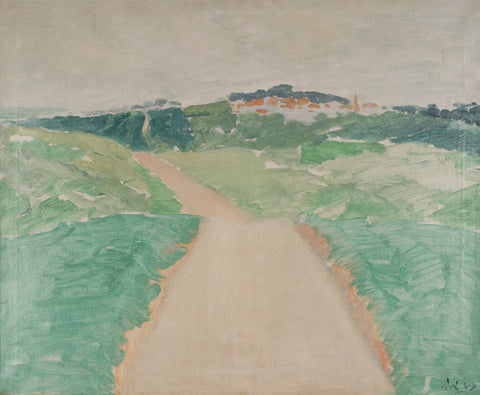N S Bendre
Born in Indore in 1910, N S Bendre was a contemporary of Nandalal Bose, Ramkinkar Baij and Benode Behari Mukherjee. His artistic career began at the State School of Art in Indore in 1929. This was followed by the Government Diploma in Art from Bombay in 1933. In 1947-1948, Bendre travelled to the United States, gaining an exposure to 20th century Western art. A member of the committee of artists who set up the Lalit Kala Akademi, and Dean of the Faculty of Fine Arts at M S University of Baroda from 1959, Bendre was a towering figure in the world of modern Indian art. Known as "Dada" (elder brother) to generations of students, he had a profound influence on art in India. Bendre introduced new ideas in art education, including an intellectual informality in disseminating information. As an artist, Bendre was equally adept at portraits, landscapes and still- lifes, inspiring awe among his students with his demonstrations of painting techniques.Bendre achieved early recognition when he won the Silver Medal of Art, awarded by the Bombay Art Society, in 1934, followed by the Gold Medal in 1941.In 1947 he went to the United States. Among Bendre’s earliest exhibitions was a solo show at Windermere Gallery, New York in 1948. He joined the Progressive Artists’ Group the same year, upon his return to India. During his years in Baroda, Bendre embarked on what is perceived as the most important phase of his career, exploring ways of combining cubist, expressionist and abstract genres from Western Modernism into his own work which stemmed from Indian formalism. He continued to travel within India and abroad, and after he resigned from Baroda in 1966, he started experimenting with his version of pointillism, receiving the Padma Shri Award from the President of India in 1969. He was also awarded the Padma Bhushan in 1991.He continued to paint till he passed away on 18 February 1992.
His exhibits with us are an oil on canvas and a gounche on paper on board.






